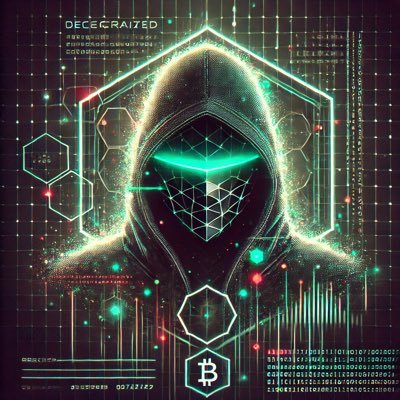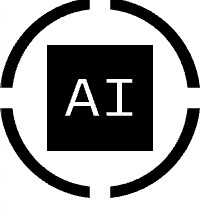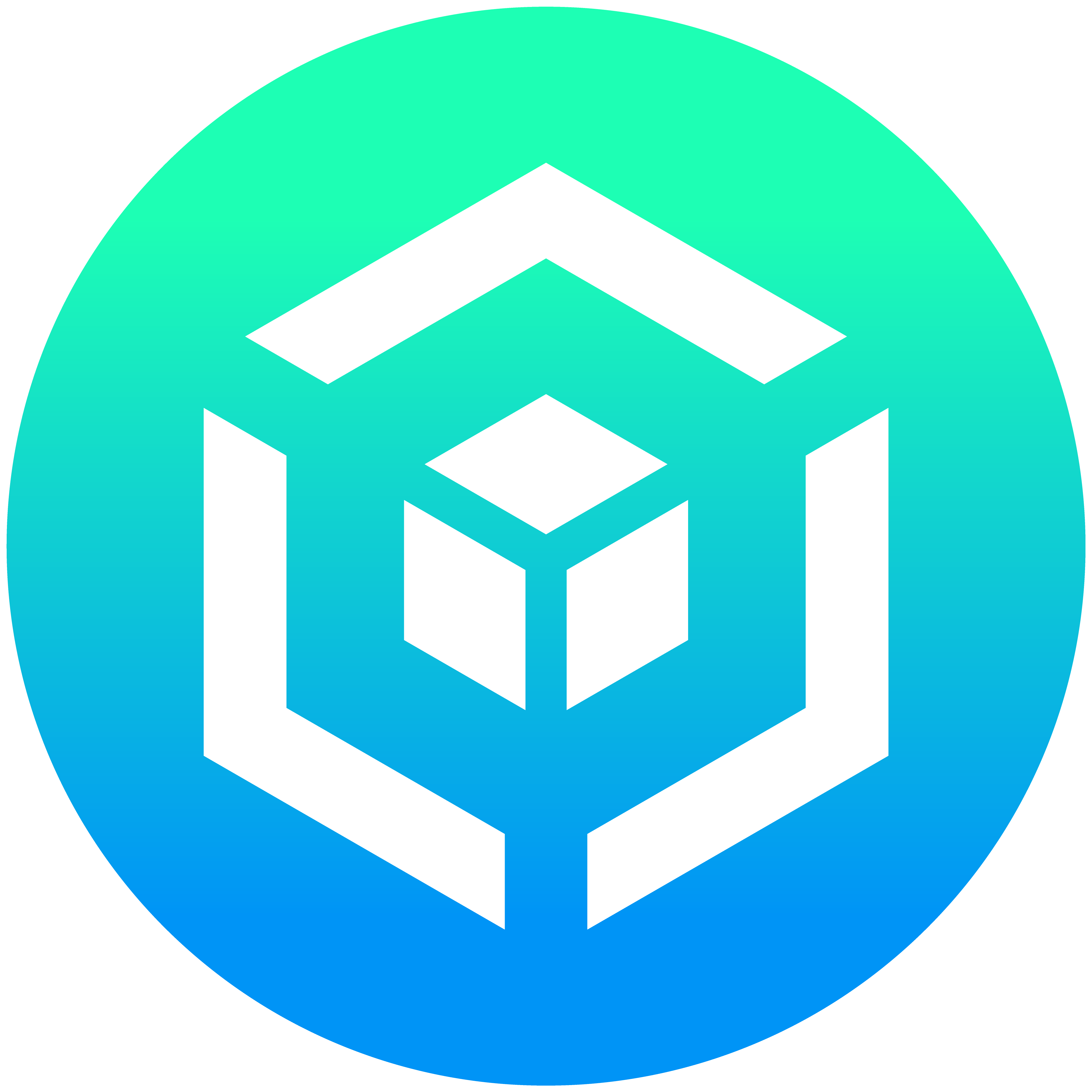Bitget: #4 al mondo per volume di trading giornaliero!
Quota di mercato di BTC62.20%
Nuovi listing su Bitget : Pi
BTC/USDT$104468.85 (+0.86%)Indice Paura & Avidità70(Avidità)
Indice Altcoin Season:0(Stagione di Bitcoin)
Flusso netto totale di ETF Spot su Bitcoin +$321.4M (1G); +$2.02B (7G).Pacchetto regalo di benvenuto per i nuovi utenti del valore di 6.200 USDT.Riscatta
Fai trading sempre e ovunque con l'app Bitget. Scarica ora
Bitget: #4 al mondo per volume di trading giornaliero!
Quota di mercato di BTC62.20%
Nuovi listing su Bitget : Pi
BTC/USDT$104468.85 (+0.86%)Indice Paura & Avidità70(Avidità)
Indice Altcoin Season:0(Stagione di Bitcoin)
Flusso netto totale di ETF Spot su Bitcoin +$321.4M (1G); +$2.02B (7G).Pacchetto regalo di benvenuto per i nuovi utenti del valore di 6.200 USDT.Riscatta
Fai trading sempre e ovunque con l'app Bitget. Scarica ora
Bitget: #4 al mondo per volume di trading giornaliero!
Quota di mercato di BTC62.20%
Nuovi listing su Bitget : Pi
BTC/USDT$104468.85 (+0.86%)Indice Paura & Avidità70(Avidità)
Indice Altcoin Season:0(Stagione di Bitcoin)
Flusso netto totale di ETF Spot su Bitcoin +$321.4M (1G); +$2.02B (7G).Pacchetto regalo di benvenuto per i nuovi utenti del valore di 6.200 USDT.Riscatta
Fai trading sempre e ovunque con l'app Bitget. Scarica ora



Prezzo di OneFinityONE
Non listato
Valuta di quotazione:
EUR
I dati provengono da fornitori di terze parti. Questa pagina e le informazioni fornite non supportano alcuna criptovaluta specifica. Vuoi fare trading con le monete listate? Clicca qui
€0.06123+5.01%1D
Grafico dei prezzi
Grafico dei prezzi di OneFinity (ONE/EUR)
Ultimo aggiornamento il 2025-05-11 13:38:47(UTC+0)
Capitalizzazione di mercato:€267,654.73
Capitalizzazione di mercato completamente diluita:€267,654.73
Volume (24h):€73.41
Volume 24h / Cap. di mercato:0.02%
Massimo di 24h:€0.06278
Minimo di 24h:€0.05782
Massimo storico:€0.7648
Minimo storico:€0.02963
Offerta circolante:4,371,636 ONE
Offerta totale:
25,543,088ONE
Tasso di circolazione:17.00%
Offerta massima:
25,546,534ONE
Prezzo in BTC:0.{6}6604 BTC
Prezzo in ETH:0.{4}2753 ETH
Prezzo con la capitalizzazione di mercato di BTC:
€421,248.44
Prezzo con capitalizzazione di mercato di ETH:
€61,419.34
Contratti:
ONE-f9...-f9954f(Elrond)
Come ti senti oggi in merito a OneFinity?
Nota: queste informazioni sono solo di riferimento.
Rapporto di analisi IA su OneFinity
Punti salienti del mercato crypto di oggiVisualizza il rapporto
Prezzo live di OneFinity in EUR di oggi
Il prezzo di OneFinity in tempo reale è di €0.06123 EUR oggi, con una capitalizzazione di mercato attuale di €267,654.73. Il prezzo di OneFinity è salito di 5.01% nelle ultime 24 ore e il volume di trading nelle 24 ore è €73.41. Il tasso di conversione ONE/EUR (da OneFinity a EUR) viene aggiornato in tempo reale.
Storico prezzi di OneFinity (EUR)
Il prezzo di OneFinity è variato di un -79.23% nell’ultimo anno. Il prezzo più alto di in EUR nell’ultimo anno è stato €0.3579, mentre il prezzo più basso di in EUR nell’ultimo anno è stato €0.02963.
DataVariazione del prezzo (%) Prezzo più basso
Prezzo più basso Prezzo più alto
Prezzo più alto 
 Prezzo più basso
Prezzo più basso Prezzo più alto
Prezzo più alto 
24h+5.01%€0.05782€0.06278
7d+36.49%€0.04056€0.06301
30d+63.71%€0.03241€0.06301
90d-16.95%€0.02963€0.07628
1y-79.23%€0.02963€0.3579
Tutto il periodo-21.05%€0.02963(2025-04-07, 34 giorni fa )€0.7648(2024-03-14, 1 anno/i fa )
Qual è il prezzo più alto di OneFinity?
Il prezzo massimo storico (ATH) di OneFinity in EUR è stato di €0.7648, registrato in data 2024-03-14. Rispetto all’ATH di OneFinity, il prezzo attuale di OneFinity è sceso di 91.99%.
Qual è il prezzo più basso di OneFinity?
Il prezzo minimo storico (ATL) di OneFinity in EUR è stato di €0.02963, registrato in data 2025-04-07. Rispetto all’ATL di OneFinity, il prezzo attuale di OneFinity è salito di 106.60%.
Previsione del prezzo di OneFinity
Quando è il momento giusto per acquistare ONE? Dovrei acquistare o vendere ONE ora?
Quando decidi se acquistare o vendere ONE, devi innanzitutto considerare la tua strategia di trading. L'attività di trading tra i trader a lungo e a breve termine sarà diversa. L'Analisi tecnica di ONE di Bitget può fornire un riferimento per il trading.
Secondo l'Analisi tecnica di ONE (4h), il segnale di trading è Acquista adesso.
Secondo l'Analisi tecnica di ONE (1d), il segnale di trading è Acquista adesso.
Secondo l'Analisi tecnica di ONE (1w), il segnale di trading è Vendi.
Quale sarà il prezzo di ONE nel 2026?
In base al modello di previsione della performance storica del prezzo di ONE, si prevede che il prezzo di ONE raggiungerà quota €0.07618 nel 2026.
Quale sarà il prezzo di ONE nel 2031?
Nel 2031, il prezzo di ONE dovrebbe aumentare del +39.00%. Entro la fine del 2031, si prevede che il prezzo di ONE raggiunga quota €0.1421, con un ROI cumulativo del +126.70%.
FAQ
Qual è il prezzo attuale di OneFinity?
Il prezzo in tempo reale di OneFinity è €0.06 per (ONE/EUR), con una capitalizzazione di mercato attuale di €267,654.73 EUR. Il valore di OneFinity è soggetto a frequenti fluttuazioni a causa dell’attività continua, 24 ore su 24 e 7 giorni su 7, del mercato crypto. Il prezzo attuale di OneFinity in tempo reale e i suoi dati storici sono disponibili su Bitget.
Qual è il volume di trading di 24 ore di OneFinity?
Nelle ultime 24 ore, il volume di trading di OneFinity è €73.41.
Qual è il massimo storico di OneFinity?
Il massimo storico di OneFinity è €0.7648. Questo massimo storico è il prezzo più alto di OneFinity da quando è stato lanciato.
Posso acquistare OneFinity su Bitget?
Sì, OneFinity è attualmente disponibile sull’exchange centralizzato di Bitget. Per altre informazioni dettagliate, consulta la guida su Come acquistare .
Posso ottenere un guadagno costante investendo in OneFinity?
Ovviamente Bitget fornisce un piattaforma di trading strategico, con trading bot intelligenti per automatizzare le operazioni e ottenere dei profitti.
Dove posso acquistare OneFinity con la commissione più bassa?
Siamo entusiasti di annunciare che la piattaforma di trading strategico è ora disponibile sull’exchange di Bitget. Bitget offre delle commissioni di trading e una profondità tra le migliori del settore per garantire ai trader investimenti redditizi.
Saldo di OneFinity per concentrazione
Whale
Investitori
Retail
Indirizzi OneFinity per durata dell'holding
Holder
Cruiser
Trader
Grafico del prezzo di coinInfo.name (12) in tempo reale

Prezzi di OneFinity mondiali
Quanto vale OneFinity in altre valute? Ultimo aggiornamento: 2025-05-11 13:38:47(UTC+0)
ONE a MXN
Mexican Peso
Mex$1.34ONE a GTQGuatemalan Quetzal
Q0.53ONE a CLPChilean Peso
CLP$64.39ONE a UGXUgandan Shilling
Sh252.69ONE a HNLHonduran Lempira
L1.79ONE a ZARSouth African Rand
R1.25ONE a TNDTunisian Dinar
د.ت0.21ONE a IQDIraqi Dinar
ع.د90.49ONE a TWDNew Taiwan Dollar
NT$2.08ONE a RSDSerbian Dinar
дин.7.13ONE a DOPDominican Peso
RD$4.05ONE a MYRMalaysian Ringgit
RM0.3ONE a GELGeorgian Lari
₾0.19ONE a UYUUruguayan Peso
$2.88ONE a MADMoroccan Dirham
د.م.0.64ONE a AZNAzerbaijani Manat
₼0.12ONE a OMROmani Rial
ر.ع.0.03ONE a SEKSwedish Krona
kr0.67ONE a KESKenyan Shilling
Sh8.91ONE a UAHUkrainian Hryvnia
₴2.87- 1
- 2
- 3
- 4
- 5
Nuovi listing su Bitget
Nuovi listing
Acquista di più
Dove posso acquistare crypto?
Acquista crypto sull'app Bitget
Iscriviti in pochi minuti per acquistare crypto con carta di credito o bonifico bancario.
Sezione video: verifica rapida e accesso rapido al trading

Come completare la verifica dell’identità su Bitget e proteggersi dalle frodi
1. Accedi al tuo account Bitget.
2. Se sei nuovo/a su Bitget, guarda il nostro tutorial su come creare un account.
3. Passa sull’icona del tuo profilo, clicca su “Non verificato” e quindi su “Verifica”.
4. Scegli il Paese o il territorio di emissione del tuo documento d’identità e il tipo di documento e segui le istruzioni.
5. Seleziona “Verifica mobile” o “Verifica PC” in base alle tue preferenze.
6. Inserisci i tuoi dati, invia una copia del tuo documento d’identità e scatta un selfie.
7. Invia la tua richiesta ed è fatta: hai completato la verifica dell’identità!
Gli investimenti in criptovalute, incluso l’acquisto di OneFinity online tramite Bitget, sono soggetti a rischio di mercato. Bitget ti fornisce modalità facili e pratiche per acquistare OneFinity. Ci impegniamo al massimo per informare gli utenti sulle criptovalute presenti sull’exchange. Ad ogni modo, non siamo responsabili per le conseguenze che si potrebbero verificare a seguito dell’acquisto di OneFinity. Questa pagine e le informazioni presenti non rappresentano un consiglio a investire su una determinata criptovaluta.
Valutazioni di OneFinity
Valutazioni medie della community
4.6
Questo contenuto è a puro scopo informativo.
Bitget Insights

mox
5h
The 60th birthday is now the most common in Germany.
This single fact says everything about where our society is heading: an aging population, a shrinking workforce, and a pension system under enormous strain. In 1950, six workers funded the pension of one retiree. Today? Just
SIX-0.66%
ONE-3.46%

WEB3-TREASURE-ZON
5h
IS PI NETWORK ABOUT TO PUMP? GET READY FOR THE RISE!
The long wait might finally be over — PI NETWORK is showing serious signs of life, and believers all over the world are buzzing with excitement!
Pi, once called “just a phone app,” is now getting ready to shock the crypto world!
WHY PI MIGHT BE THE NEXT BIG THING:
✅ Massive Global Community — Over 47 million pioneers worldwide! 🌍
✅ Utility-Based Ecosystem — Real apps, services & businesses built on Pi! 🛒🧾
✅ Decentralization at Heart — Fair mining for everyone via mobile phone! 📱🔒
✅ Mainnet Launch Incoming — Strong signals that open mainnet is near! 🧑💻🚀
As exchanges quietly start listing test prices and the team hints at upcoming mainnet features, whispers of a potential price recovery are growing louder. Some Pi believers are even predicting a future price above $10, $50, or more once full utility and listings roll in! 📈👀
Remember this:
> "If you missed Bitcoin early, don’t sleep on Pi."
"The Pi you mined for free could change your life one day!"
ARE YOU STILL HOLDING YOUR PI?
It’s not just an app — it’s a movement powered by belief, patience, and a powerful community.
Hold tight. Stay strong. The Pi pump might just be around the corner.
✨🔐📲💎🚀
#PiNetwork #PiIsComing #CryptoFuture #NextBigThing #HoldPiStrong
BITCOIN-8.11%
MOBILE-5.24%
BGUSER-8SLTXCVR
5h
#SHM
SHM is the native cryptocurrency token of the Shardeum network, a blockchain platform designed to address scalability and decentralization challenges in the blockchain space. Shardeum employs a unique approach called dynamic state sharding, which allows the network to scale dynamically based on demand, ensuring low gas fees and high transaction throughput.
### Key Features and Use Cases of SHM Token:
1. **Dynamic State Sharding**: Shardeum's dynamic state sharding technology enables the network to adjust the number of shards based on network load, ensuring efficient transaction processing and scalability.
2. **Low Gas Fees**: By leveraging dynamic state sharding, Shardeum aims to provide low gas fees, making it an attractive option for decentralized applications (DApps) and users.
3. **Decentralization**: Shardeum focuses on achieving true decentralization, allowing anyone with minimal hardware to become a validator and participate in network security and transaction validation.
4. **Tokenomics**: SHM follows a dynamic supply model, similar to leading Layer 1 blockchains like Ethereum. The initial supply of SHM was set at 249 million tokens, with allocations for the foundation, team, sales, and ecosystem development.
5. **Token Sale and Mainnet Launch**: Shardeum conducted a token sale for SHM, which ran from March 19, 2025, to May 4, 2025, just before the mainnet launch on May 5, 2025. The token sale offered early access to SHM at favorable pricing.
6. **Trading and Exchanges**: SHM tokens are traded on various centralized cryptocurrency exchanges, with Bitget being one of the most popular platforms for trading SHM/USDT pairs.
7. **Investment Potential**: SHM tokens have gained attention in the cryptocurrency market for their investment potential, particularly due to Shardeum's innovative technology and focus on scalability and decentralization.
### Conclusion:
SHM token represents a significant development in the blockchain space, offering a scalable, decentralized, and low-cost solution for DApps and users. With its dynamic state sharding technology and focus on decentralization, Shardeum aims to address key challenges in the blockchain industry and provide a robust platform for the future of decentralized applications.$SHM
GAS+0.13%
ANYONE-7.21%
BGUSER-8SLTXCVR
5h
# OBOL: Redefining Staking Security Through Distributed Validator Technology
## Introduction
OBOL represents a paradigm shift in blockchain staking infrastructure, pioneering a technology known as Distributed Validator Technology (DVT) that fundamentally transforms how validators secure proof-of-stake networks. As Ethereum and other major blockchains have transitioned to proof-of-stake consensus mechanisms, the need for resilient, secure, and decentralized validation infrastructure has become increasingly critical. OBOL addresses these challenges through an innovative approach that distributes validator responsibilities across multiple independent operators, enhancing security, reliability, and decentralization in the staking ecosystem. This comprehensive analysis explores OBOL's technological architecture, ecosystem components, and potential impact on the future of blockchain infrastructure.
## The Validator Security Challenge
To appreciate OBOL's significance, one must first understand the fundamental challenges in traditional validator setups:
### Single Points of Failure
Conventional validators operate on single machines with single private keys, creating vulnerability to:
- Hardware failures causing downtime and slashing penalties
- Network outages leading to missed attestations
- Security breaches that could compromise validator keys
- Geographic and infrastructure risks
### Centralization Pressures
Economic and technical factors push staking toward centralization:
- Economies of scale favoring large institutional operators
- Technical complexity creating barriers for individual participation
- Risk management challenges for smaller operators
- Limited geographic diversity in node operation
### Key Management Risks
Validator key security presents significant challenges:
- Compromised keys can lead to catastrophic slashing events
- Backup strategies create additional security vulnerabilities
- Key rotation complexity limits operational flexibility
- Limited options for secure multi-party key management
## OBOL's Technical Architecture
OBOL has developed a comprehensive technical stack to address these challenges:
### Distributed Key Generation (DKG)
At the core of OBOL's innovation is a secure method for creating distributed validator keys:
- Validators are created through a multi-party computation ceremony
- No single party ever possesses the complete validator key
- Key shares are distributed among multiple independent operators
- Threshold signature schemes enable collaborative signing
### Charon Client
The primary software implementation enabling distributed validation:
- Acts as middleware between consensus and execution clients
- Coordinates message passing between distributed validator nodes
- Ensures synchronized consensus participation across the cluster
- Implements BFT-style consensus among validator nodes
### Middleware Network
A specialized communication infrastructure that enables:
- Secure and timely communication between distributed validator components
- Monitoring and performance analytics across validator clusters
- Network-wide coordination for optimal performance
- Cross-operator synchronization and timing guarantees
### Security Enhancements
OBOL implements several innovations to enhance validator security:
- Multi-factor authentication for validator operations
- Geographic distribution requirements for enhanced resilience
- Automated monitoring and alert systems
- Slashing protection mechanisms
## The OBOL Protocol
The OBOL ecosystem operates through a comprehensive protocol that governs distributed validator operation:
### Validator Clusters
The fundamental operational units within the OBOL ecosystem:
- Groups of 4-16 independent nodes operating as a single validator
- Configured with custom threshold requirements for signing operations
- Can span multiple operators, jurisdictions, and infrastructure providers
- Maintain synchronized state through the Charon middleware
### Cluster Configuration Options
OBOL enables flexible validation setups:
- **Solo Clusters**: Individual operators running multiple nodes for self-redundancy
- **Trusted Clusters**: Known participants collaborating on validation
- **Permissionless Clusters**: Open participation through economic staking requirements
- **Institutional Clusters**: Enterprise-grade setups with enhanced security requirements
### Performance Optimization
The protocol implements several mechanisms to ensure optimal validator performance:
- Latency-aware communication protocols
- Leader selection algorithms to minimize communication overhead
- Fallback mechanisms for node failures
- Graduated consensus thresholds based on network conditions
### Economic Security
OBOL aligns economic incentives for distributed validation:
- Staking requirements for middleware operators
- Performance-based reward distribution
- Slashing conditions for protocol violations
- Reputation systems for operator selection
## The OBOL Ecosystem
The OBOL protocol supports a comprehensive ecosystem of participants and services:
### Validator Operators
Individual and institutional stakers who leverage DVT to enhance the security and reliability of their validation operations, including:
- Individual ETH stakers seeking enhanced security
- Institutional staking providers managing customer assets
- DAOs distributing validator control across their membership
- Protocol treasuries securing their staked assets
### Middleware Operators
Specialized service providers maintaining the infrastructure required for seamless communication between distributed validator components:
- Running communication relays for distributed validator clusters
- Providing performance monitoring and alerting services
- Supporting discovery mechanisms for cluster formation
- Operating specialized hardware for optimized signature aggregation
### Technology Integrators
Service providers incorporating OBOL's DVT protocol into their offerings:
- Staking-as-a-service platforms
- Hardware security module manufacturers
- Wallet providers offering staking services
- Node operation platforms and infrastructure providers
### Developer Community
Technical contributors building tools, interfaces, and integrations that extend the capabilities of the OBOL network:
- Creating user interfaces for distributed validator management
- Developing monitoring and analytics tools
- Building middleware extensions for specialized use cases
- Creating educational resources and implementation guides
## Implementation and Deployment
OBOL's technology has been deployed across several phases:
### Testnet Implementations
The protocol has undergone extensive testing through:
- Multiple testnet iterations with increasing complexity
- Simulated fault scenarios to test resilience
- Performance benchmarking under various network conditions
- Security audits from multiple independent firms
### Mainnet Deployment
OBOL's production implementation follows a staged approach:
- Initial deployment with limited validator clusters
- Gradual expansion to more operators and validator types
- Integration with major staking services
- Support for additional proof-of-stake networks beyond Ethereum
### Integration Partners
OBOL has established partnerships with key ecosystem participants:
- Major staking providers implementing DVT for customer assets
- Hardware security module manufacturers supporting distributed key shares
- Infrastructure providers offering OBOL-compatible node setups
- Development teams building complementary staking infrastructure
## Impact on the Staking Ecosystem
OBOL's distributed validator technology has far-reaching implications:
### Enhanced Security
DVT fundamentally improves staking security through:
- Elimination of single points of failure in validator operation
- Distribution of risk across multiple independent operators
- Improved resilience against hardware and network failures
- Enhanced protection against sophisticated attacks
### Increased Decentralization
The technology enables greater decentralization by:
- Lowering the risk threshold for individual participants
- Enabling collaborative validation across jurisdictions
- Creating new models for community-based validation
- Reducing the advantage of large-scale centralized operations
### Institutional Adoption
DVT addresses key concerns for institutional participation:
- Meets enterprise-grade security requirements
- Enables separation of duties for regulatory compliance
- Provides redundancy guarantees required by financial institutions
- Supports sophisticated key management policies
### Network Health Improvements
The broader network benefits from:
- More geographically distributed validation
- Higher aggregate uptime across validators
- Reduced correlation of failures during network stress
- More participants in the validation ecosystem
## Future Development Roadmap
OBOL's future development focuses on several key areas:
### Cross-Chain Expansion
Extending DVT beyond Ethereum to other proof-of-stake networks:
- Adapting the protocol for different consensus mechanisms
- Creating a universal standard for distributed validation
- Building cross-chain validator management tools
- Enabling validators to secure multiple networks simultaneously
### Enhanced Security Features
Continuing innovations in validation security:
- Implementation of post-quantum cryptographic techniques
- Advanced threat detection and prevention mechanisms
- Automated security response systems
- Enhanced privacy for validator operations
### Governance and Decentralization
Evolving the protocol's governance model:
- Transitioning to community-driven development
- Implementing on-chain governance mechanisms
- Creating incentive structures for ecosystem contributors
- Developing standards for distributed validator operation
### Advanced Operational Tools
Building sophisticated tooling for validator operators:
- Comprehensive analytics dashboards
- Performance optimization suggestions
- Automated cluster management
- Advanced monitoring and alerting systems
## Challenges and Considerations
Despite its promising approach, OBOL faces several challenges:
### Technical Complexity
The distributed nature of DVT introduces additional complexity:
- Coordination requirements increase operational overhead
- Latency considerations impact validator performance
- Implementation errors could affect multiple validators
- Testing and auditing distributed systems presents challenges
### Adoption Hurdles
The transition to distributed validation faces practical barriers:
- Existing validators may resist changing established setups
- Integration with current staking infrastructure requires effort
- Educational gaps limit understanding of DVT benefits
- Short-term operational changes may discourage migration
### Performance Optimizations
Maintaining competitive performance requires ongoing development:
- Minimizing additional latency from distribution
- Optimizing communication protocols for efficiency
- Balancing security with operational speed
- Adapting to evolving network requirements
### Regulatory Considerations
The evolving regulatory landscape presents challenges:
- Varying jurisdictional requirements for validator operation
- Questions around regulatory responsibility in distributed setups
- Compliance considerations for institutional operators
- Data privacy concerns across international boundaries
## Conclusion
OBOL represents a transformative approach to blockchain validation through its distributed validator technology. By addressing fundamental security and reliability challenges in staking infrastructure, OBOL has positioned itself as an essential component of the maturing proof-of-stake ecosystem. As blockchain networks increasingly form the foundation for critical financial infrastructure, solutions that enhance security and resilience while maintaining decentralization will prove invaluable.
For individual stakers, institutions, and the broader blockchain community, OBOL offers a path toward more secure, reliable, and truly decentralized validation—fulfilling the original promise of proof-of-stake consensus while addressing practical operational challenges. While the implementation of distributed validation represents a significant shift in operational practices, the enhanced security and reliability benefits make a compelling case for widespread adoption across the staking ecosystem.
As proof-of-stake networks continue to secure trillions in value and form the foundation of the decentralized economy, technologies like OBOL's DVT will likely transition from innovative options to industry standards—representing an important evolution in how we collectively secure and maintain blockchain networks.$OBOL
CORE-3.08%
OBOL+1.65%
Habibushoot
5h
Altcoins 🔥
As long as #ETH is moving within the Triangle, this is the time to Accumulate as much as you can..
Remember one thing, Once the train slips out of your hand, it won't come back..
One more thing, ETH leads the Altcoin Rally. (KING for a Reason)
ETH-3.38%
ONE-3.46%
Asset correlati
Criptovalute popolari
Una selezione delle 8 crypto con il più alto market cap.
Aggiunte di recente
Le criptovalute aggiunte più di recente.
Cap. di mercato comparabile
Tra tutti gli asset su Bitget, questi 8 sono i più vicini a OneFinity in termini di market cap.
Informazioni aggiuntive su OneFinity
Panoramica della moneta
In relazione alle monete
In relazione al trading
Aggiornamenti delle monete
































